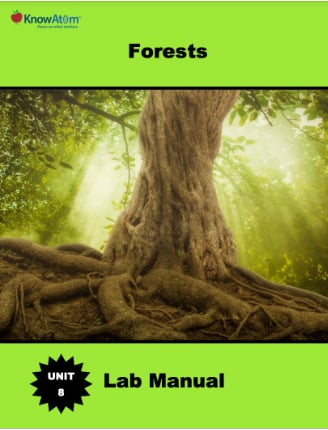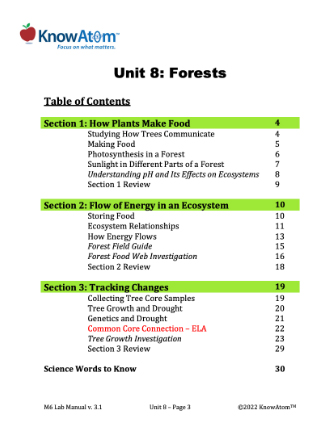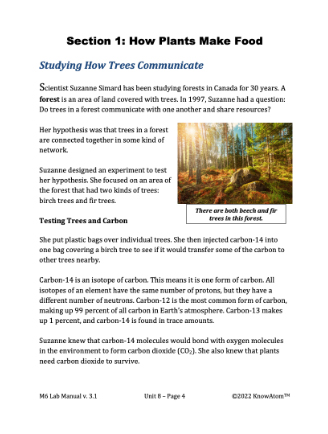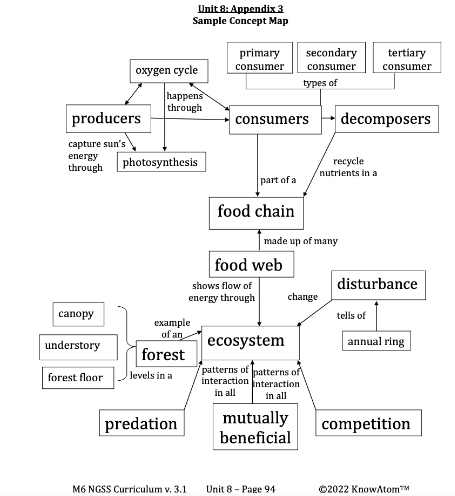Collecting Tree Core Samples
Christina Restaino has traveled around the western United States to study trees. For three years, she went to 122 different locations where Douglas fir trees grow. She used a tree corer, which looks like a large corkscrew, on more than 2,000 individual trees. By turning the tree corer again and again, she was able to pull out core samples without hurting the trees. These core samples are pencil-shaped sections of the trunk.
Scientists like Christina look for patterns in the tree core samples to tell them about past disturbances. This is because trees keep a diary of disturbances in their trunks.
How Tree Rings Form
The trunk is the main stem of a tree that gives it shape and strength. It supports the leaves and branches. It also transports nutrients between the roots and the rest of the tree. The trunk grows in diameter each year. As a tree grows, a new ring is added to its trunk each year. An annual ring refers to the light- and dark-patterned wood that forms as a tree grows in diameter over time. The light-colored layer grows in the spring. The dark-colored layer forms in the late summer.
The trunk, branches, and twigs of the tree are covered with bark. The bark protects the tree from insects, disease, storms, and extreme temperatures. Inside the bark is a pipeline of living tissue called the pith. The pith carries water and nutrients throughout the tree. The pith is surrounded by dense, hard, inner wood called heartwood. Sapwood is the softer wood between the heartwood and the bark.
Tree Growth and Drought
Christina and her team found that the trees didn’t grow as much during times of drought and increased temperatures. A drought is a prolonged period of unusually low rainfall, resulting in water shortages. They observed a cause- and-effect relationship between the amount of rainfall, the temperature, and tree growth. The rising temperatures caused the amount of water in the soil and atmosphere to decrease. This meant the trees took in less water.
In response, the trees closed their stomata to try to reduce water loss through their pores. This meant the trees weren’t collecting carbon dioxide for photosynthesis, so they weren’t getting the energy they needed to grow. The evidence for this was in the tree rings. Thin rings mean the tree didn’t grow as much as normal because of a lack of water. Thick rings mean the tree had plenty of water and so it grew a lot.
Why Understanding Tree Growth Matters
Many scientists study tree rings to learn about past conditions. They look for patterns that can help them make predictions in the future. For example, one team of scientists used a variety of different data to evaluate how competition among trees affects which trees survive a drought and which ones die.
These scientists focused on forests in California during four years of extreme drought. They found that the driest and densest forests are the most at risk of dying. These findings make sense. There is a limited amount of water in the area. Each tree in that area is competing for the same water. When there is plenty of water, this competition isn’t very noticeable because there is enough water for all of the trees.










